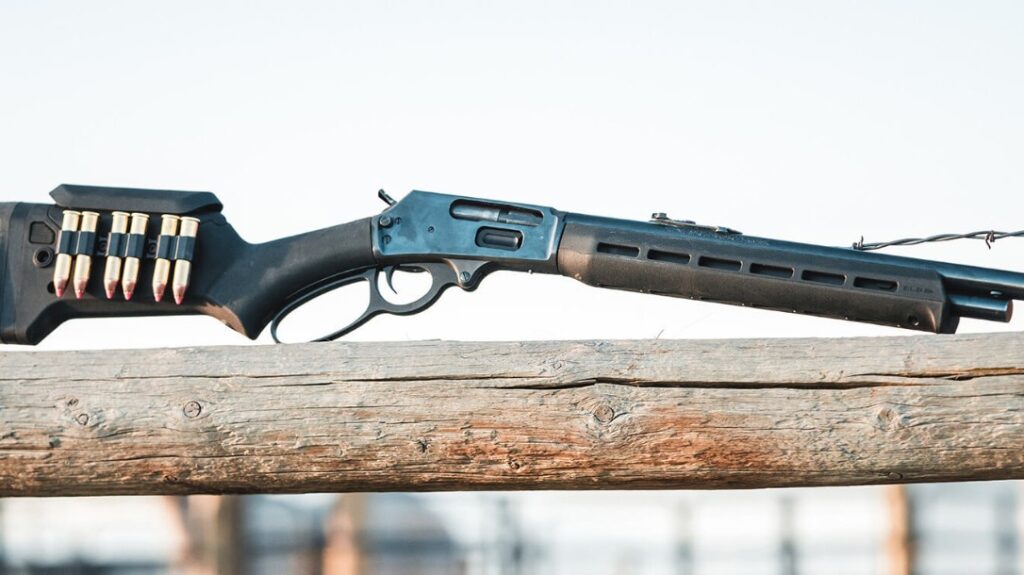Inspired by a conversation I had with a soldier who “just likes irons” I need to have your attention for a moment. For anyone still on the fence about using a CCO (Aimpoint CompM4) or any conventional 2 MOA type dot in place of iron sights, allow me to outline the reasons to trust the dot.
The short version is that the dot is several magnitudes better at everything a rifle sight should help you, the shooter, accomplish using the rifle. Namely target observation and sight alignment.
The Dot is over 5 times as precise
The Aimpoint dots are 2 MOA, most competitive dots are also 2 MOA, some are 1, some are 3.5, and every manufacturer has some tolerance allowable in the emitter. Regardless, that is a very precise aiming point without being too precise and wasting what the M4/AR are generally and quickly capable of (2-4 MOA). Keep in mind there is also tolerance allowable on a front sight and we’ll get to that chonky fellow in a minute.
Advertisement — Continue Reading Below
Now, what does the front sight post of an AR measure in at for MOA coverage?
Well, with a 20″ sight radius like that of the M16, it measures in at approximately 11 MOA. Yes, eleven. The standard front sight post is .07″ and is ~20″ away from the rear peep and doing the math that equates to about 11 minute of angle coverage, or that of an average torso at about 150 yards/meters.
It’s thick. The M4, using the same post, has even more coverage because we shortened the sight radius by about 25%. It comes out to about 16.5 MOA.
Advertisement — Continue Reading Below
Now, which optical system would you like to use to maximize your hit probability on a target, the 2 MOA one, or the 16.5 MOA one? The one that will still leave the edges of a head visible at 200-300 meters or one that covers width of the human body at 150 meters?
The Dot is Always* Aligned
As much as we hammer in this view here during PMI on iron sights…

Advertisement — Continue Reading Below
Everybody has their own take on what it looks like for them. and this is before we get into a bisecting hold or “6 O’Clock” hold and any of that jazz. Shooters will always have some subjectivity in their eye position behind on rear peep and, after establishing a zero, that position of your eye in relation to the rear sight matters.
If you move your head you change your sight alignment. That means every movement of your body is going to change where that 16.5 MOA point is at to differing degrees. Simply shooting from a different position, switching shoulders, or getting a mildly different cheek weld on the stock can influence your point of impact away from your point of aim.
Lucky for us The Dot does not heavily depend on the position of the eye in relation to the optic as long as the user can see the dot. The Dot does not have an eye relief requirement to index the sight properly. The Dot’s are low parallax, and while centering the dot within the optical housing is still preferred since the parallax the sights do have will be apparent around the sights lens edges, the question of sight alignment becomes much less crucial since LED reflector and Holographic sights essentially maintain their sight alignment at all times. This only deviats due to parallax at the edge of the lenses if the shooter holds the dot to the extreme edge of the sight window.
Advertisement — Continue Reading Below
In short, if you can see the dot your sight is aligned. Again, only at the very edges of the optic can it cause issues and only to a certain *degree. Anywhere in the vast middle of the optic your sight picture will match with the alignment, and far more so than peep and post will give you when the post is thicker than the target.
The Dot Greatly Reduces Target Obfuscation (Things You Can’t See)
We’ve talked about the horizontal coverage of the post width being about 11-16.5 MOA but lets not forget the other dimensions and aspects of the post either. The whole front sight post blocks half your target and the little protective wings and the post gas block or sight base block even more. If you bisect the target for your sight picture you cannot see the bottom half because the post is in the way. If you use a 6 O’clock hold you cannot see what is in front of the target from the tip of the post and closer. You cannot see clearly anything else that the post is obscuring between you and the target.
Is this nit picky?
Advertisement — Continue Reading Below
Perhaps, however the The Dot doesn’t have this issue. You can see below/in front of and above/behind the target with The Dot. Not only are you getting a more precise aiming point and sight picture, you are getting a less obstructed one. Even on a rifle equipped with a fixed front sight post you can see beyond the sight and around the point of aim in a way that is not possible with irons alone.
Sight Contrast (Things You Can See Better)
A brightly shining LED contrasts nicely against just about anything. Being able to adjust the brightness on it for visibility in variable lighting conditions allows you to tailor the sight for the environment quickly. The Dot probably has night vision compatibility too, depending upon the model, so passive aiming in the dark is possible much more easily.
Compare The Dot to the matte black of a standard post or, at best, a high contrast fluorescent paint and there is no comparison. The best you can achieve with the post perfectly contrasted to the target environment is the 11-16.5 MOA aiming point and with no easy variability from that target environment to one under different conditions.
Advertisement — Continue Reading Below
Both Eyes Open (Things You Can See Faster)
This is where the term reflex sight comes into play. If you, the shooter, see movement you can work with the natural reflexes of your eyes to snap the optic into place and more quickly acquire the proper sight picture to take an effective shot. The contrast of an actively glowing aiming point works with your eyes design to pick up light. An active light source coming from the LED in The Dot or laser (Holographic) picks up faster than the reflected passive light you are seeing come off a sight post.
This combined with the greater precision in both the aiming point and the sight alignment makes for significantly faster and more accurate shots if the shooter is even remotely supporting the firearm and working the trigger properly.
With the use of both eyes your field of view and the ability to pick up and movement and search is drastically increased. The sight, when it crosses your vision and comes up onto target will be less disruptive to your seeing that target as you switch to the sight. For soldiers specifically on the pop-up 300m range this is incredibly helpful in watching for the target movement in either lane from your firing point and being able to track the rifle onto the visible target(s) before they time out.
Advertisement — Continue Reading Below
That in turn translates to a much smoother ability of the individual to go from an ‘off sight’ observational frame of reference to an ‘on sight’ ready to take a shot frame of reference.
Two Sight Planes, Instead of Three (Fewer Things You Need to See)
With traditional iron sights you must keep track of three items at three different distances from your eye. If that sounds complex, you’re correct. It is complex and keeping your eye focused properly on the front sight post to properly align the rear sight and then also passively track the target in the background is a tough order. That said it is what was done and had been done for centuries prior to optics advancing into more common use and dot sights specifically allowing for an easement in this complex equation.
By using The Dot you narrow the focus to two sight planes, your rear sight/front sight relation are gone and now its just The Dot and the target. Red dots, and even more so with holographic sights, project the aiming point forward and your eyes and brain can process them nearly like they’re on the same plane of distance. This allows easier tracking of both sight and target and while you still need to focus on the sight for a shot, doing so has become drastically easier.
Advertisement — Continue Reading Below
So, Trust Your Dot
It…
- is 5 to 8 times more precise
- is always* aligned
- does not obscure the target
- is easier to see, being an active light source
- can be easily used both eyes open
- requires the eye to track less items and do so more easily
The Dot is the best unmagnified system we have come up with until we have some retinal projected active ranging HUD or some such… here’s looking at you NGSW-FC.















